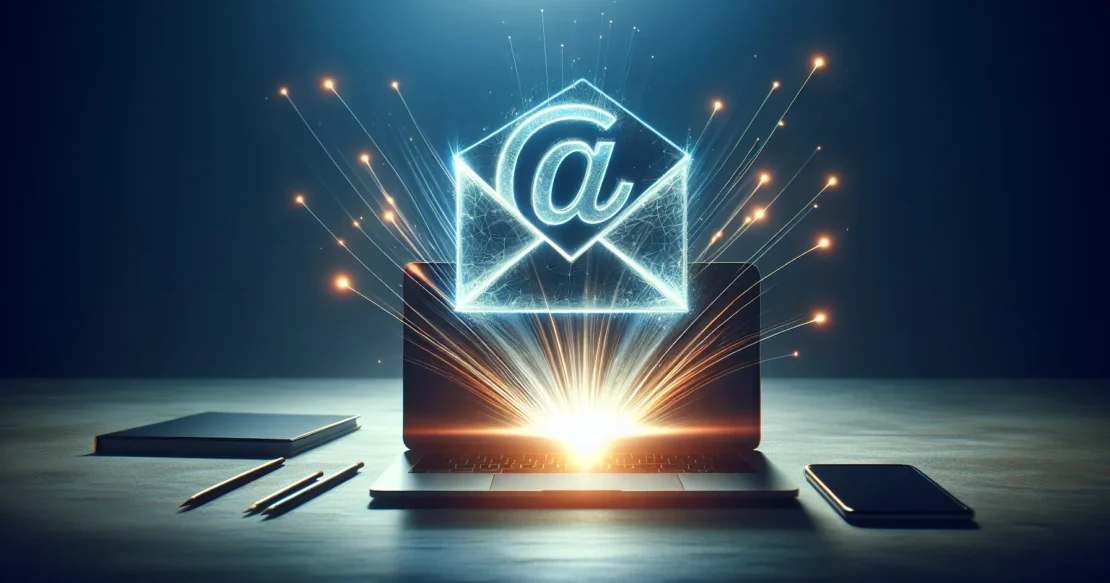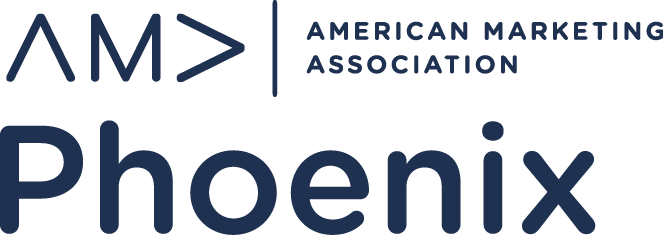- December 28, 2023
- Posted by: Featured
- Categories: Blog, Expert Roundups

18 Strategies for Re-Engaging Email Subscribers
From the insights of eighteen marketing professionals, including senior content marketers and COOs, this article unveils a spectrum of strategies to re-engage inactive subscribers. Starting with boosting re-engagement with exclusive offers and concluding with prioritizing a community focus, we explore the eighteen unique tactics that can breathe new life into your email lists.
- Boost Re-Engagement with Exclusive Offers
- Take a Value-First Approach
- Engage With Questions, Not Unsubscribes
- Write FOMO-Inspired Subject Lines
- Optimize Email Timing for Engagement
- Leverage Loss Aversion
- Stimulate Email Opens via Behavioral Tactics
- Rekindle Interest with Interactive Campaigns
- Use a Direct Approach
- Share Valuable Content, Not Updates
- Send Personalized, Human Outreach
- Automate Triggers for Inactive Subscribers
- Engage with Interactive Infographics
- Include a Personal Touch with Exclusive Offers
- Personalize Campaigns with Incentives
- Be Patient with an Extended Timeframe
- Gather Survey Feedback
- Prioritize a Community Focus
Boost Re-Engagement with Exclusive Offers
I’ve always loved providing a high-value offer to unengaged subscribers—a bigger discount than we’d offer to the general audience or an extra special experience. One thing I did at a car-share company that worked really well for re-engagement was partnering with nonprofits. Members took a trip, and we donated a dollar to the nonprofit. This increased re-engagement by 34%.
 Melody White
Melody White
Senior Content Marketer
Take a Value-First Approach
One strategy to re-engage inactive subscribers is to give them something of value without expecting anything in return. For example, share an exclusive report packed with fresh data they can’t get anywhere else, or an eBook that dives into solving a big headache in their industry.
Warming up disengaged subscribers requires offering them something useful and valuable to get them to open your emails and click through them. Focus on rebuilding trust and connection by helping them solve a problem, which will pique their interest and increase the likelihood of engagement with your content.
I often reflect on an analogy my old boss used: customer communications are like dating. You wouldn’t propose marriage on the first date, and similarly, you shouldn’t expect leads to make a purchase before they’ve shown interest. Start by giving them a reason to be curious and to trust you. Once that relationship is established, then you can introduce sales talk. It’s all about making a genuine, helpful connection first—providing value to demonstrate your expertise in the field.
 Katie White
Katie White
Content Marketing Manager, Centime
Engage With Questions, Not Unsubscribes
We’ve done it a couple of different ways, but we identify people who were originally active but have lapsed for 3-6 months (depending on the average time to purchase), and send an email asking a simple question in the subject line—something asking for their help.
Then the email itself gives the options to answer the question, with very little other text. The question could help them to refine their preferences, or one that helps you gain insight into what topics to cover more often in your emails. The point is to get them to click again. Once they do click, we make sure to factor that into our segmentation, and if they don’t click, the next email they get from us is a “Do you want to unsubscribe?” email.
 Brittany Reith
Brittany Reith
Marketing Manager, SEM and SEO Strategist, 9 Clouds
Write FOMO-Inspired Subject Lines
I believe subject lines are your best friend. Write compelling headlines and create a sense of FOMO. Your inactive subscribers might give it a shot to avoid missing out on the opportunity you have offered.
Nobody wants to miss out on something fascinating, and it might pull your inactive subscribers back to your business. Include everything great that you can offer them with the right selection of words in your title.
 James Koskela, Founder and Owner, Zero Day Gear
James Koskela, Founder and Owner, Zero Day Gear
Optimize Email Timing for Engagement
Timing and frequency are everything. It’s possible that your emails are being sent at inconvenient times or too frequently, leading to disengagement. Experiment with different sending schedules to find what works best. Don’t be afraid to invest in and experiment with A/B testing to identify the most effective elements of your campaigns.
 Andy Jessop
Andy Jessop
Head of Content, SALT.agency
Leverage Loss Aversion
There is one psychological trick marketers can use to re-engage unengaged subscribers: fear of missing out. Often, we hate losing more than we like winning. For example, you can say that they will either be receiving fewer emails and, therefore, might miss out on great content or offers, or even “threaten” to unsubscribe them altogether.
It’s also great if you can show some previous achievements. For example, you saved $X last year through our offers, or you learned Y email marketing tips over the past 24 months.
 Sascha Hoffmann
Sascha Hoffmann
Lifecycle Marketing Consultant, Back2MarketingSchool
Stimulate Email Opens via Behavioral Tactics
Leveraging behavioral science to stimulate response can be a highly effective strategy in subscriber re-engagement.
We know from multiple studies that employing psychological strategies like urgency, herd mentality, and loss aversion in your marketing copy can help to inspire action with your reader. These same tactics work in email re-engagement to stimulate opens. However, it’s important to note that this is only the first step.
Because metrics related to email opens are becoming less and less reliable in our age of privacy protection, you also want to build an opportunity for a deeper connection with your audience past the open. Employing behavioral strategies, as well as strong incentives within the body of the email, can bring a higher level of interest and engagement with the subscriber.
 Maryann Pfeiffer, Principal and Founder, 108 Degrees Digital Marketing
Maryann Pfeiffer, Principal and Founder, 108 Degrees Digital Marketing
Rekindle Interest with Interactive Campaigns
After a recent visit to an escape room, I had an idea to re-engage inactive subscribers to my mailing list. I created an interactive, mystery-solving email campaign.
Each email contained a puzzle or riddle related to our industry, with clues embedded in our previous content. Subscribers had to engage with past emails and our website to solve these puzzles. This not only encouraged revisiting our older content but also added an element of fun and challenge.
In one campaign, we noticed a 28% increase in engagement from previously inactive subscribers. This approach turned mundane email checking into an interactive experience, reigniting interest in our communications and deepening subscriber engagement with our brand’s content.
 Daniel Bunn
Daniel Bunn
Founder and Director, DB IT
Use a Direct Approach
A separate email campaign was run for inactive users, typically including 2-3 emails.
The first email was a “Miss You” message aimed to re-engage users, offering options for feedback and preferences. The second email held exclusive discounts or freebies were provided to entice users back. The third email was a simple inquiry was made regarding their interest in remaining on the email list.
Monitoring unsubscribe and bounce rates was crucial since the campaign targeted unengaged contacts. In cases where there was no response after 3-4 emails, contacts were moved to a separate list and emailed once every 2-3 months.
We designed this direct approach to efficiently re-engage users while being mindful of performance metrics.
 Sreejith Sreekumar
Sreejith Sreekumar
Email Marketer, Changing Tree
Share Valuable Content, Not Updates
Share really useful information. Nobody needs another “update” or “newsletter” in their lives. They need information that helps them do their jobs better, get more out of life, or enjoy themselves more. If your email audience is falling off, make sure you’re sending them things that are worth the click.
While there’s a chance they’ll care about your latest offer, product, or discount, they’ll get fatigued if you only talk about yourself. Share other information, inspire them, entertain them—try to act like a friend would. When you can do that, they’ll be a lot more likely to hear what you have to say, even when you’re talking about yourself.
 Elliott Brown
Elliott Brown
Marketing Leader, Cache Financials
Send Personalized, Human Outreach
It’s hard to believe how well this works, but when people on our email marketing list haven’t opened an email in months, it’s insightful to ask why. Avoiding a template and personalizing the question to the customer almost always elicits a response. Sometimes they’ve moved away but haven’t unsubscribed; other times, they just don’t receive the emails because they go to the promotions inbox in Gmail.
Regardless of the reason, they notice that a real human being is reaching out, and they appreciate the personal touch. Inactive subscribers may re-engage when contacted with a sincere email, potentially rekindling those relationships.
 Kam Talebi
Kam Talebi
CEO, Gigli
Automate Triggers for Inactive Subscribers
You can create a dynamic segment that automatically updates based on criteria you set. The trigger would simply be when a subscriber enters that segment. For example, the criteria could be not opening the last five campaigns, not clicking on any links, or not engaging with your emails in a certain way. Then, when a subscriber enters that segment, it triggers the automation.
I would recommend running the automation as an instant trigger, but you can also specify the exact time when the email should be sent to increase the chances of it being read.
 Christopher Smith
Christopher Smith
Head of Content, Help In Homework
Engage with Interactive Infographics
One effective strategy to re-engage inactive subscribers and revive their interest in email communications is embedding an interactive infographic directly into the email.
Interactive infographics are engaging and provide a dynamic user experience. Using interactive elements such as clickable buttons, hover-over effects, or even embedded quizzes, I can capture the attention of inactive subscribers and encourage them to interact with my content.
The interactive nature of the infographic not only makes the email visually appealing but also adds an element of curiosity, prompting subscribers to explore the information further.
To implement this strategy successfully, ensure that the interactive elements are mobile-friendly, as many users access emails on their smartphones.
Also, make sure that the content of the infographic aligns with the subscribers’ interests and preferences, providing value and relevance.
 Diana Royanto
Diana Royanto
Writer, Milkwhale
Include a Personal Touch with Exclusive Offers
First, we send a personalized email checking in on them, acknowledging their absence, and expressing our desire to stay connected. This human touch makes them feel valued rather than just another name in a database. Then, we pair this with an exclusive offer tailored to their interests, based on their past interactions with our content or services. Offers could be a special discount, a valuable resource, or early access to new products or features.
This approach both revives their interest and also gives them a compelling reason to re-engage with our comms. A personal touch and tangible value is the blend that reignites engagement.
 Alex Ugarte
Alex Ugarte
Marketing and Operations Manager, London Office Space
Tailor Campaigns with Incentives
To re-engage inactive subscribers, one effective strategy is to create a targeted and personalized email campaign. Begin by sending a re-engagement email with a compelling subject line that sparks curiosity.
In the email content, acknowledge their inactivity, express genuine concern, and offer an incentive or exclusive promotion to reignite their interest. Utilize dynamic content that speaks directly to their preferences and past interactions, reminding them of the value your emails provide. Include a clear call to action, such as asking them to update their preferences or provide feedback, to foster engagement.
Employing this personalized and value-driven approach can increase the likelihood of reviving interest and reactivating dormant subscribers.
 Emily Rodgers
Emily Rodgers
Marketing Manager, Drive Research
Be Patient with an Extended Timeframe
Our strategy involves providing re-engagement campaign recipients with an extended timeframe to engage with our content. To re-engage inactive subscribers, we treat win-back efforts as a series rather than a standalone campaign. Sending multiple messages enables us to address various aspects of disengagement.
We acknowledge the significance of time, allowing subscribers at least two months to interact. Understanding that reconnection may not happen immediately with the win-back message, we prioritize a patient approach for a more organic rebuilding of the connection.
 Vicky Smith
Vicky Smith
Email Strategist and Copywriter, Flic Email
Gather Survey Feedback
Engaging inactive subscribers can be achieved by sending them a survey on a compelling topic. People enjoy feeling intelligent and valued for their input, so providing an opportunity to share their opinions can be effective. A simple and free Google Form can implement this technique.
Alternatively, for a more sophisticated approach, platforms like Typeform or the native functionality of some email marketing platforms offer animations and other engaging elements.
After gathering data from inactive subscribers, this information can be utilized to tailor content strategy, sending them emails that are more likely to be of interest. This approach often leads to improved open rates and click-throughs.
 Dennis Consorte
Dennis Consorte
Digital Marketing and Leadership Consultant for Startups, Snackable Solutions
Prioritize a Community Focus
Using words like “It’s time to take action,” or starting the sentence with the word “You,” such as “You need to see this” or “You want to watch this,” focus on why your inactive subscribers are inactive.
Once you solve that question, or have an understanding of why, then you can compose an email almost like you’re talking to them. Remember, you’re growing a community; you’re not just selling to them; you’re educating them on why they need to stay involved with your product.
 Nick Eischens
Nick Eischens
COO, Popl
Submit Your Answer
Would you like to submit an alternate answer to the question, “What is one strategy you use to re-engage inactive subscribers and revive their interest in your email communications?”
